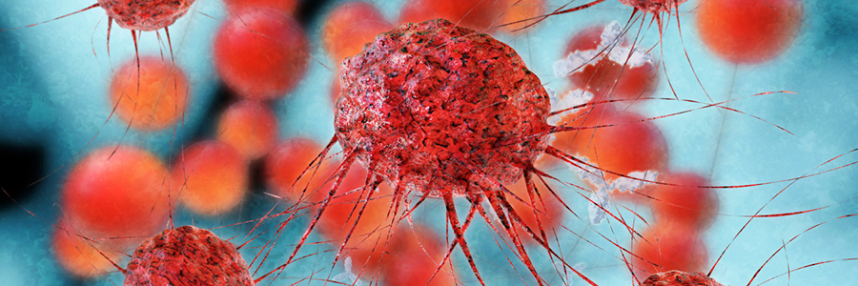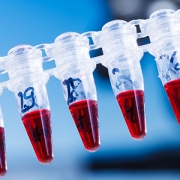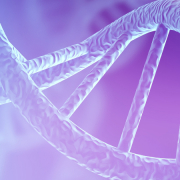Shooting the messenger: therapeutic targeting of RNA
As scientists learn more about the crucial role of ‘messenger’ molecules, many see effective targeting as the missing link in our treatment of disease
Image: Wellcome Library, London
At this time of year, when Christmas carols are widely performed, we hear of angels or heavenly messengers bringing important news to mortals. For scientists and medics, cellular and genomic messengers are at the forefront of our minds, too, as they are increasingly believed to play a vital role in health and disease, says Alain Li Wan Po.
Garbled messages and disease
Molecular-level messengers play an important role, such as in relaying information during cell to cell and intracellular signalling. Should the messages get mixed, serious diseases such as cancer may follow; when normal, controlled growth is disrupted, cells can proliferate, dividing without control and resulting in many more wayward cells with even more undesirable properties such as invasiveness. Similarly, in auto-immune diseases, instead of cells being recognised as native, misleading messengers identify them as foreign. Friends become foes, to be attacked by the immune system and disposed of, often with disastrous consequences such as rheumatoid arthritis or diabetes.
When Watson and Crick wowed the world with the double-helical structure of DNA, the biggest puzzle was how the information in DNA was transferred to generate the encoded protein. The identity of the messenger was then unknown, as was the molecular code. Today, every biology student knows of the statement: “DNA makes RNA makes protein”; one which Francis Crick referred to as James Watson’s ‘slogan’ for the Dogma of Molecular Biology.
Soon, the mechanisms by which information is transferred and an ordered sequence of amino acids is generated to produce proteins were unravelled. In the search for the crucial go-between messengers, various types of RNA, other than what we now know as messenger RNA (mRNA) – the molecule that carries a version of the genetic code to serve as a template for the production of protein – were identified, including transfer RNA, microRNA, and varied forms of non-coding RNA, long and short. Molecules that were once thought to be ‘junk’ soon opened up an Aladdin’s cave to amaze and chasten everyone – leading scientists included. The complexity of this RNA world continues to fox; the way in which RNAs orchestrate cellular processes, and may be linked with various conditions, is an area of great interest for scientists.
Making the most of the messenger
Until recently, drug-discovery research has largely focused on targeting proteins, and therefore virtually all marketed drugs act on proteins in the guise of receptor blockers, receptor agonists, enzyme inhibitors, and signalling-molecule inhibitors. With the development of DNA recombinant technology, using proteins for replacement therapy became possible – for example, in the cases of recombinant growth-hormones, insulin, and an increasing array of recombinant enzymes for rare genetic deficiency diseases. The exquisite targeting of specific proteins, particularly in the form of monoclonal antibodies, has also considerably improved the therapeutic possibilities for various diseases.
It eventually became obvious that RNA with a complementary sequence could be effectively used to target messenger RNA, and indeed any RNA molecule, with high specificity. However, major problems in applying this approach clinically included the instability of the candidate small RNA drugs (oligonucleotides, or oligos), their resulting transient activity, and inefficient delivery to intended targets. Moreover, little was known about their safety. Of particular concern is off-target gene silencing, which may have disastrous consequences. Nonetheless, the first therapeutic oligo was licensed in 1998 for the treatment of cytomegalovirus-associated (CMV) retinitis in AIDS patients – but it showed limited efficacy. The introduction of effective antiretroviral drug combinations also made CMV retinitis a rare complication, and the resulting lower demand led to withdrawal of the drug from the market. This lack of commercial success discouraged research, and the contrasting great commercial success of several therapeutic antibodies made investment in the development of such drugs the priority. Nonetheless, over the past decade, there has been resurging industrial interest in therapies directed at RNA.
Messenger drug development
In 2013, the oligo mipomersen was licensed for the treatment of homozygous familial hypercholesterolemia, and in August last year the European Medicines Agency (EMA) conditionally approved ataluren for the treatment of Duchenne muscular dystrophy (DMD). Several other oligos are in late-phase clinical development, and it looks likely that targeting RNA will become an increasingly viable therapeutic option. Technology and terminology – such as ‘RNA interference’ – in this relatively new area of science are expanding. However, the available drugs have relatively modest efficacies and ill-defined long-term safety profiles. For example, the formation of antibodies against the oligos is common. While the short-term clinical consequences appear unimportant, the long-term impacts are simply unknown.
Ataluren illustrates some of the difficulties. About one in 10 cases of DMD is caused by a genetic mutation that leads to a stalling of the translation of the mRNA to dystrophin – a protein essential for muscle function. Ataluren effectively patches over the stop signal so that translation can continue to produce a functional variant. Given the clear unmet medical need and the absence of any obvious major harm, the EMA conditionally approved the drug, though the evidence-base was small – only 117 patients given different doses of the drug and 57 patients given a placebo in the pivotal trial. While there was a suggestion of improved mobility, no robust evidence of efficacy emerged. The US Food and Drug Administration, unlike the EMA, were not sufficiently convinced, and rejected the drug, demanding further studies.
Only time and further studies will tell how effective therapeutic targeting of RNA will be. When the first monoclonal antibody was marketed three decades ago, the prospects were modest and antibodies against the new drugs were also problematic – yet today it is hard to imagine drug therapy of severe disease without monoclonal antibody drugs. We can only hope that oligos will follow a similar trajectory of success.
Professor Alain Li Wan Po is editor-in-chief of the Journal of Clinical Pharmacy and Therapeutics, and is a fellow of the Royal Pharmaceutical Society and the Royal Statistical Society.
–









